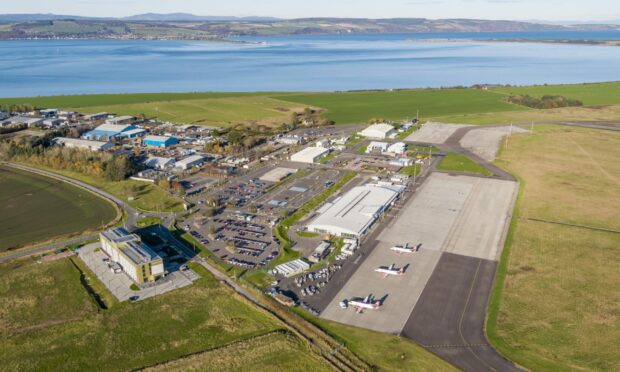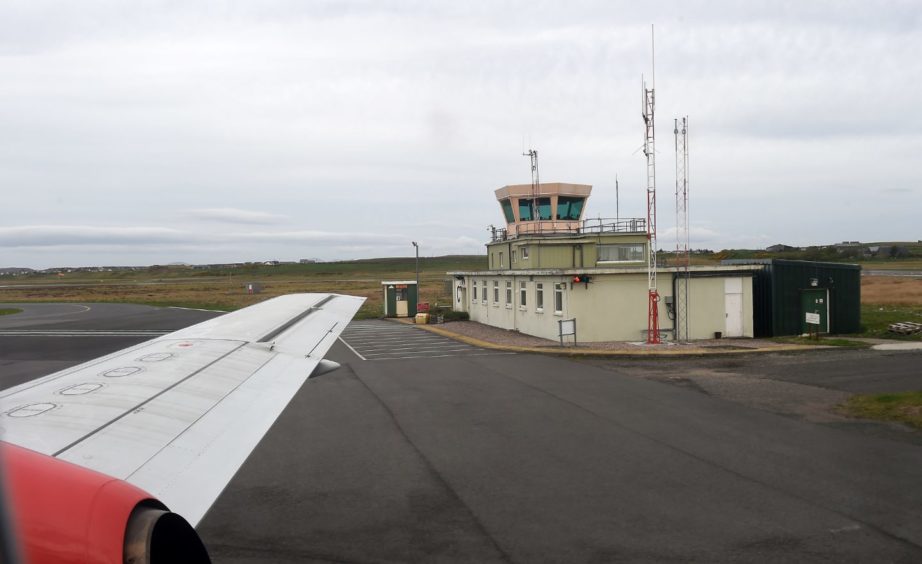A European trade union has condemned plans by Highlands and Islands Airports Limited (Hial) to close six air traffic control towers warning of “long-term negative consequences” of the move.
The European Transport Workers’ Federation (ETF) has written a strongly-worded letter to transport minister Graeme Dey calling on Scottish Government to reverse the controversial decision to centralise air traffic control services and operate them remotely.
Hial is planning to introduce remote integrated air traffic control services for five airports: Inverness, Dundee, Kirkwall, Stornoway, and Sumburgh, from a combined surveillance centre in Inverness. In addition, Benbecula and Wick John o’ Groats airports will change the way air traffic management is delivered by extending their current Aerodrome Flight Information Service (AFIS) operations.
In its letter, ETF argues that the plans would “strongly disrupt the local rural communities” in the north of Scotland, not just through the loss of highly skilled jobs, but also by “potentially losing essential services – such as medical flights – due to the vulnerability of remote tower technology”.
The union, which says it represents 5 million transport workers from more than 41 European countries, further warned of the “huge safety risks” associated with downgrading services at Benbecula and Wick . The group argued proposed changes will bring the capacity of the two airports down to the “level of an aerodrome flight information service”.
Huge safety risks
ETF said it “draws the attention of the Scottish government to the huge safety risks in implementing such a decision, reminding the authorities of the imperative need to maintain their current level of specialized air traffic services, due to the nature of both the airports and the traffic they currently serve, such as scheduled air services, ferry flights, and offshore helicopter operations, and the very specific weather conditions in this part of Europe”.
Livia Spera, secretary general of ETF, said: “Airports provide significant indirect employment in local communities, and the same can be said for ATC towers. This includes indirect jobs providing maintenance and services to the tower, from engineering to cleaning, all will be affected by this decision.”
In the letter, she argues that the technology to operate air traffic control remotely is in its “infancy”, with the only current example in the UK based at London City airport.
She said: “In the UK, there is only one tower now operated remotely, and that is in London City airport, located in the middle of one of the largest cities in Europe. It is operated from one of the largest ATM operations centers in Europe in Swanwick, and all the infrastructure associated with both the location of the airport, and the controllers, provides a certain level of institutional support.
“Given the infancy of the technology, we find it difficult to assure these communities that that service can be provided in the event of bad weather, infrastructural damage or cyber-attack.’’
Given the infancy of the technology, we find it difficult to assure these communities that that service can be provided in the event of bad weather, infrastructural damage or cyber-attack.”
Livia Spera, secretary general of the European Transport Workers’ Federation
A Scottish Government spokeswoman said there was no other solution to the programme, called the Air Traffic Management Strategy (ATMS), that would sustain the operation of flights across Hial’s remote network.
In a statement the spokeswoman said: “The decision to modernise air traffic control will ensure that air services can continue in the future.
“The option chosen by Hial in 2018 will improve resilience, safety and reliability of services. It remains the case that no alternative has been proposed that addresses the issues that the ATMS programme aims to resolve.
“Hial continues to engage with its staff, unions, airline customers and other interested parties as the programme is implemented.”
A spokesman for the airport group also argued there are “no alternative proposals”.
In a statement, he said: “Hial provides lifeline and essential air services and contributes to the social and economic prosperity of our local and island communities. As a result, we need to ensure our airports and aviation services are maintained and future-proofed for the medium to long-term.
“To date, there are no alternative proposals for air traffic services that provide the all-encompassing solution of HIAL’s current air traffic management strategy.
No flights without change
“Unless we move forward with our modernisation programme we cannot guarantee air connectivity for the Highlands and Islands into the future. ATMS will modernise the way airspace is managed and, importantly, deliver more resilient and safer air navigation for decades to come.”
The statement further added that the group will ensure there are no compulsory redundancies as part of the process.
“As a public body Hial is subject to the Scottish Government’s ‘no compulsory redundancy policy’. There will be no reduction in the number of jobs in the new air traffic management structure,” he said.
There will be no reduction in the number of jobs in the new air traffic management structure.”
Hial spokesman
“Our air traffic colleagues are highly valued members of our team, and our priority is to retain them within Hial. We have worked with Prospect over several months to agree a number of policies to support our colleagues’ transition to our air traffic management programme. We remain in dialogue with the trade union on the principles of a commuting policy that will allow our colleagues to remain at their home location and work in Inverness.
“The introduction of an Aerodrome Flight Information Service (AFIS) at both Benbecula and Wick airports will ensure these airfields have a viable and sustainable future, based on a proportionate level of service aligned to the volume and complexity of air traffic using these airports. AFIS – which already operates at four other Hial airports – will provide the continuation of an air traffic service that is safe, efficient and regulatory compliant.”
Inverness, Kirkwall, Stornoway and Benbecula were among six airports that grounded all but emergency flights for a 24-hour period.
Hial staff who are members of the Prospect union launched industrial action in January after the company announced it aims to replace all air traffic control towers in the north with a video feed and technology.

